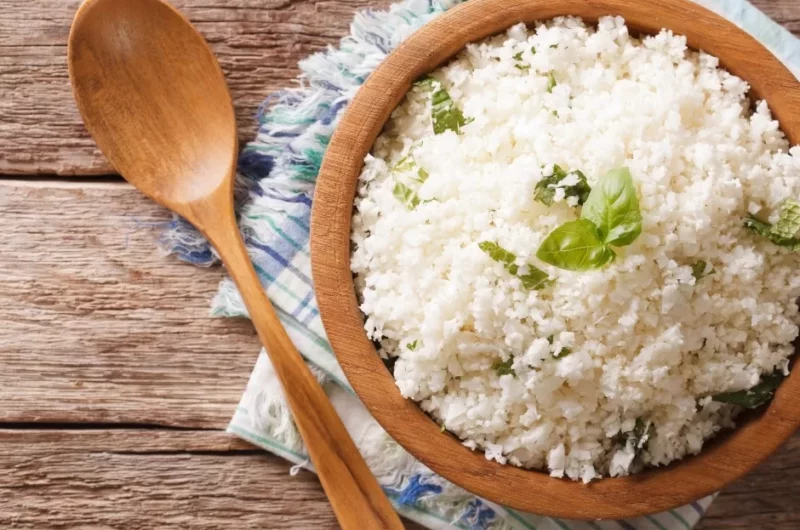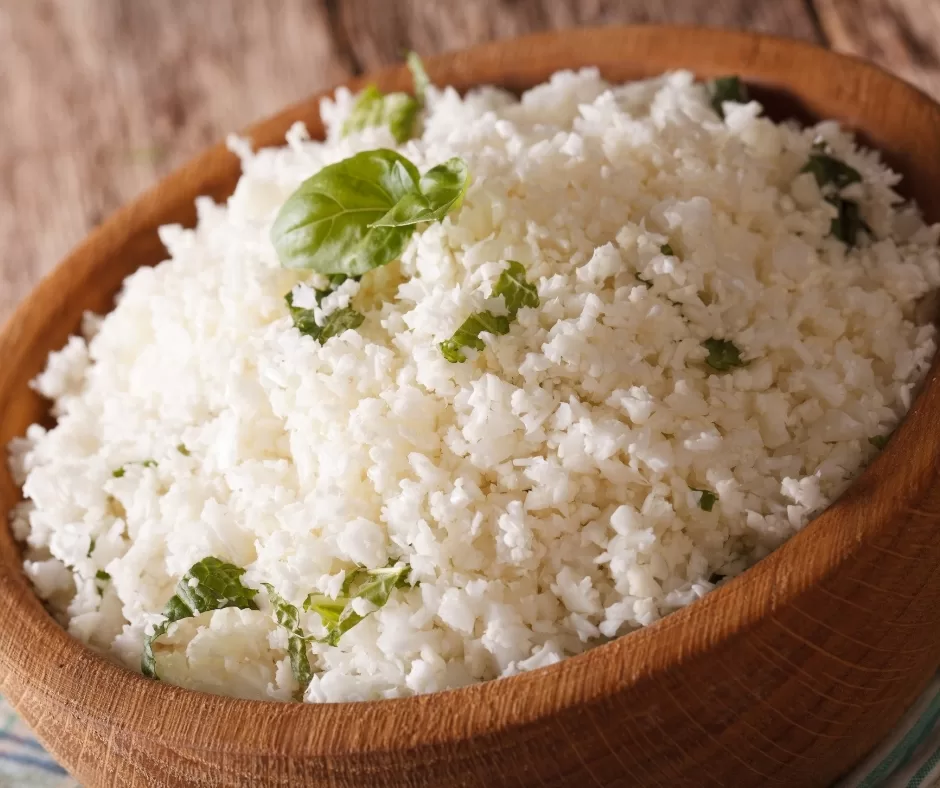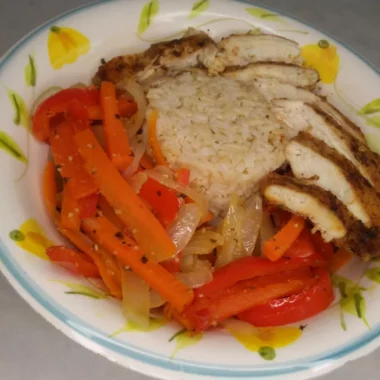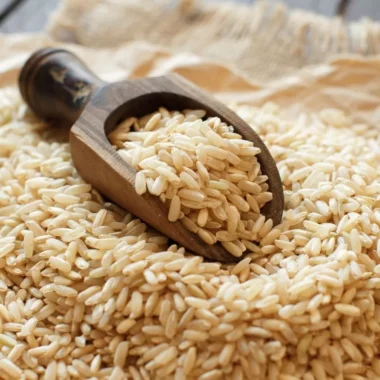In recent years the use of cauliflower has exploded. This versatile vegetable can be used to make alfredo sauce, cauliflower mashed potatoes, pizza crust, fritters, tater tots, and rice.
Even though cauliflower is technically not real rice, it’s a great alternative to serve alongside curries, stir-fries, or even a blackened chicken rice bowl. Unlike traditional rice, which often adds a heavy element to dishes, cauliflower rice is the perfect filling yet light substitute.
Furthermore, cauliflower is an excellent way to add more vegetables to your diet. The low carb nature of cauliflower is one of the many reasons individuals who subscribe to a low carb, keto, or paleo diet have fallen in love with cauliflower.
Cauliflower’s Nutritional Profile
Cauliflower has an impressive nutritional profile. One medium head of cauliflower has about 146 calories. Containing 1.6 grams of fat, 11 grams of protein, 29 carbs, and 12 grams of fiber, there are only 25 calories in one cup of cauliflower.
Furthermore, one cup of this grain-free rice only has 3 net carbs. Whether it is raw or cooked cauliflower, you would be receiving a mere 10-20% of the calories you would usually get from traditional rice.
Health Benefits Of Cauliflower
Belonging to the cruciferous species, cauliflower is a nutrient-rich vegetable. Its nutrient profile includes ascorbic acid, carotenoids, phenolic compounds, vitamin E, and glucosinolates. Similar to other cruciferous vegetables, cauliflower also has anticarcinogenic and antioxidant effects.
In its hydrolyzed state, glucosinolates can inhibit oxidative stress, malign transformation as well as bring about detoxification enzymes. In addition to this, glucosinolates can also stimulate the immune system, decrease the risk of cancer and the generation of cancer cells, and inhibit carcinogenic mutations.
Vitamin C, also known as ascorbic acid, plays a critical role in keeping the immune system in tip-top shape and reduces the intensity of colds by inhibiting bacterial infections. Ascorbic acid can also prevent cardiovascular disease and decrease free radicals, thereby protecting the body from damage.
Carotenoids are lipophilic plant pigments that are everywhere in nature. Consuming carotenoids is correlated with decreasing the risk of cardiovascular disease, cancer, age-related macular degeneration, and photosensitivity connected with UV exposure.
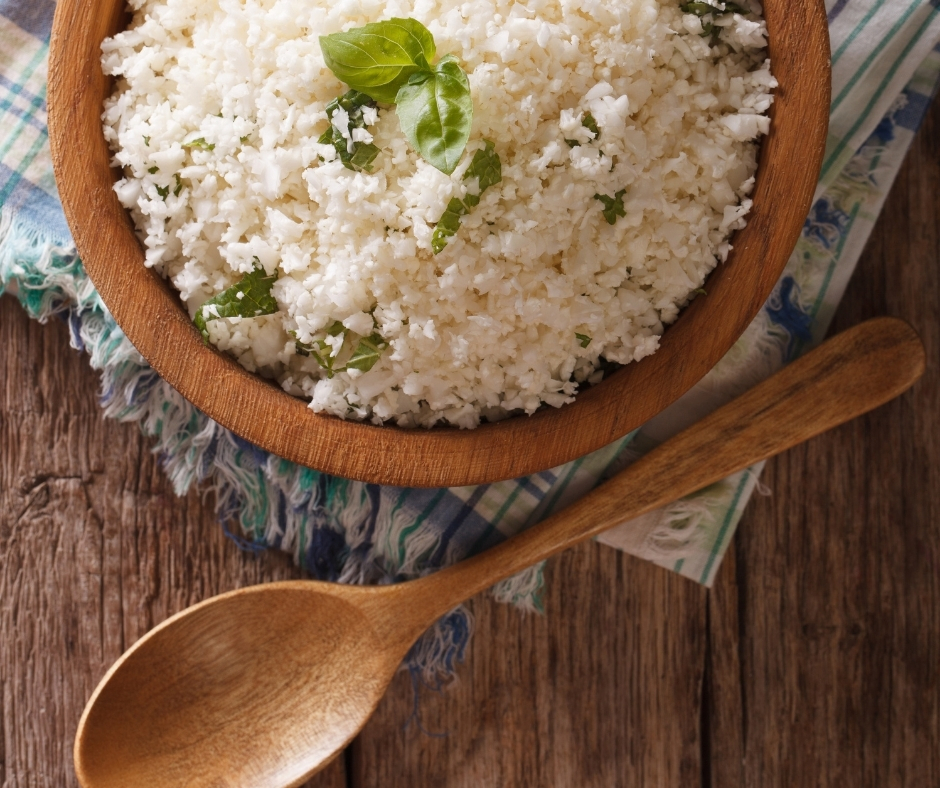
Can I Make Cauliflower Rice Without A Food Processor
The goal of ricing a cauliflower is to end up with little pieces of cauliflower that resemble rice grains. There are three methods used to make cauliflower rice.
The easiest way to make cauliflower is by processing it into small pieces using a food processor outfitted with the grating disk. Alternatively, you can also make cauliflower rice in a blender.
If you don’t have a food processor or blender, you can grate the cauliflower using a boxed grater. Remove the leaves from the base of the cauliflower, cut the head into chunks and grate it into rice-size grains using the portion of the boxed grater with medium-sized holes.
The last option for ricing cauliflower is to chop it by hand. However, you must chop it finely so that you end up with uniform pieces of cauliflower. If the cauliflower rice has no uniformity, it will not cook evenly.
Cauliflower Rice Variations
Recipe variations are essential as they prevent you from getting tired of eating the same food over and over again. Cauliflower heads can differ in size. A small to medium head of cauliflower may produce up to 5 cups of cauliflower rice, while a large head of cauliflower may produce up to 10 cups of cauliflower rice.
Even though cauliflower seasoned with a touch of salt and pepper or garlic and onions is perfectly delicious on its own, as you can imagine, with so much cauliflower rice, you can get bored easily.
Sometimes it’s better to expand the flavor. Luckily there are several ways you can dress up cauliflower rice.
You can make cilantro lime cauliflower rice by sauteeing the riced cauliflower in a tablespoon of oil for 5 minutes, then adding a teaspoon of garlic powder, the zest of 1 lime, and freshly chopped cilantro leaves.
On the other hand, you can also make lemon garlic cauliflower rice by sauteeing 2 cloves of garlic in a tablespoon of oil until fragrant, then adding the riced cauliflower and cooking it for 5 minutes. Add the zest of one lemon, and you’ve got lemon garlic cauliflower rice.
The final variation of cauliflower rice is garlic parmesan. Simply sautee 2 cloves of garlic in a tablespoon of oil until fragrant, then add the riced cauliflower and cook it for 5 minutes. Remove the cauliflower rice from the stove, stir in the parmesan cheese, and dig in.
How Long Does Cauliflower Rice Last?
The lifespan of cauliflower rice depends on which state it is in and how it is stored. Unfortunately, a pungent, off-putting sulfur odor can develop after storing raw riced cauliflower in the refrigerator for a couple of days. Therefore it is best to use raw riced cauliflower immediately or freeze it.
On the other hand, cooked cauliflower rice can last up to four days in the refrigerator as long as it’s stored in an airtight container. Raw or cooked cauliflower rice can last in the freezer for 1-2 months.
To freeze raw riced cauliflower, place it into a clean tea towel and squeeze the excess water out of the cauliflower. Transfer the cauliflower rice to a freezer-safe resealable bag or an airtight container and place it into the freezer. To freeze cooked cauliflower rice, allow it to cool completely, then place it into a freezer-safe resealable bag or airtight container and freeze it.

